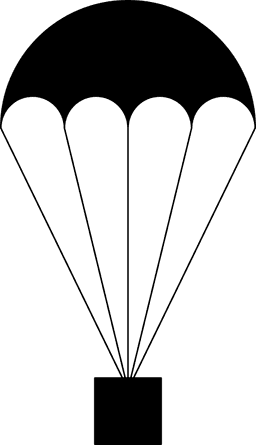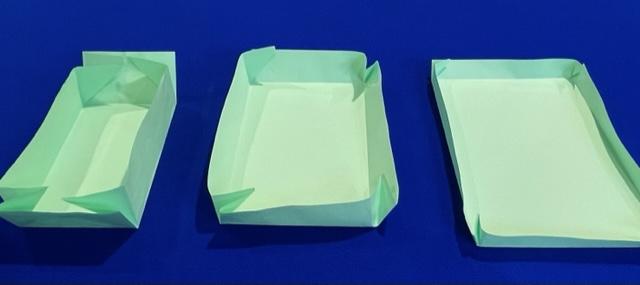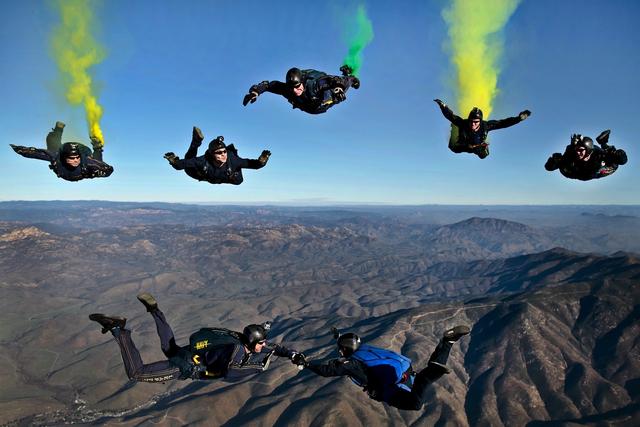Myths about teaching can hold you back
- Year 8
Comparing the speeds of different parachutes
I can explain how the size of a parachute affects its top speed.
- Year 8
Comparing the speeds of different parachutes
I can explain how the size of a parachute affects its top speed.
These resources will be removed by end of Summer Term 2025.
Switch to our new teaching resources now - designed by teachers and leading subject experts, and tested in classrooms.
These resources were created for remote use during the pandemic and are not designed for classroom teaching.
Lesson details
Key learning points
- The larger the surface of a parachute, the bigger its drag.
- Gravity pulls down with a steady force.
- At top speed the force of drag on a parachute is the same size as the force of gravity on the jumper.
Keywords
Drag - When an object moves through a fluid there is a drag force that opposes the movement.
Parachute - A parachute is used to increase the size of drag forces. This slows down the object it is attached to.
Gravitational force - The gravitational force on something pulls it downwards, towards Earth.
Resultant force - A resultant force is the overall effect of a set of forces on an object, taking their directions into account.
Common misconception
Students may think that all objects fall at the same rate (this is only true in a vacuum).
Use force diagrams to discuss the effect of different sized drag on the parachutes, linking this to resultant force and acceleration.
To help you plan your year 8 science lesson on: Comparing the speeds of different parachutes, download all teaching resources for free and adapt to suit your pupils' needs...
To help you plan your year 8 science lesson on: Comparing the speeds of different parachutes, download all teaching resources for free and adapt to suit your pupils' needs.
The starter quiz will activate and check your pupils' prior knowledge, with versions available both with and without answers in PDF format.
We use learning cycles to break down learning into key concepts or ideas linked to the learning outcome. Each learning cycle features explanations with checks for understanding and practice tasks with feedback. All of this is found in our slide decks, ready for you to download and edit. The practice tasks are also available as printable worksheets and some lessons have additional materials with extra material you might need for teaching the lesson.
The assessment exit quiz will test your pupils' understanding of the key learning points.
Our video is a tool for planning, showing how other teachers might teach the lesson, offering helpful tips, modelled explanations and inspiration for your own delivery in the classroom. Plus, you can set it as homework or revision for pupils and keep their learning on track by sharing an online pupil version of this lesson.
Explore more key stage 3 science lessons from the Moving by force unit, dive into the full secondary science curriculum, or learn more about lesson planning.

Content guidance
- Risk assessment required - equipment
Supervision
Adult supervision required
Licence
Prior knowledge starter quiz
6 Questions
Q1.Which force causes objects to fall to the ground?
Q2.Why is a force represented by an arrow on a diagram? Choose the best answer.
Q3.Which force opposes movement through liquids?
Q4.At the end of a race a car opens a parachute. Why do they do this?

Q5.A car moving along a flat road has an unbalanced forwards force acting on it for 30 s. What will happen to the car's movement?
Q6.An emergency food parcel is dropped from a plane. Near the ground the parachute opens. What happens to the movement of the food parcel?

Assessment exit quiz
6 Questions
Q1.Match the key words to their explanations.
A force that opposes movement through gases and liquids.
A device used to slow fast objects, using drag forces.
The force pulling an object downwards to Earth.
The overall effect of a set of forces on an object.
Q2.When does a falling object reach a steady top speed?
Q3.During a test. a pupil drops paper parachutes with different surface areas but equal weights. Which is the correct prediction about the fall speed?

Q4.In a parachute drop test the times recorded are 1.21 s, 1.24 s, 1.23 s and 1.28 s. What is the mean time?
Q5.A skydiver is falling with their parachute closed. What happens to the size of the forces on them immediately after opening the parachute?



